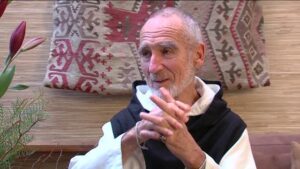A Short Guide to Keep Your Spirits Through the Winter
Neanta Parnell – December 15, 2022
The first day of winter is December 21st. With the colder season coming, so do the holidays, vacationing, the beginning or ending of relationships, new year’s resolutions, and less sunlight exposure. During the Winter Solstice; the first day of winter, the Earth is tilted on such an axis where the sun stays below the North Pole’s horizon, causing anything above the equator to receive less than 12 hours of sunlight exposure each day (sacbee.com). This means shorter days and longer nights.
With more time spent in the dark elegance of night under the moon and stars – no matter how cozy and introspective – means less exposure to the sun’s rays which helps our bodies produce a plethora of neurotransmitters; brain chemicals. Serotonin in particular is imperative to stabilizing our mood (pbsnc.org). Responsible for appetite, digestion, mood and emotion. The less exposure to sunlight, the less saturation of serotonin in the brain. Imbalances in serotonin, specifically due to lack of sunlight in the cold months of Winter, may manifest as Seasonal Affective Disorder.
Commonly known as S.A.D. , Seasonal Affective Disorder is usually characterized by:
- Feelings of melancholy, or sadness
- Low energy or sluggishness
- Moodiness
- Cravings for sweets
It can be tempting to lean into, or difficult to escape from these sticky, negative emotions and cravings. These emotions can make it difficult to complete everyday tasks, socialize with loved ones, or even set aside time for adequate self-care – we can’t lay in bed all day eating milk chocolate while watching Korean dramas – we’ve got to take care of ourselves and get proper nutrition and exercise!
The Inner Strength Conscious Classroom, Foundation of Mindfulness For the Classroom training, mentions practicing thought objectivity and opting into a journaling practice. Thought objectivity, usually in the form of “thought bubble” practices involves the individual setting aside time to actively visualize encapsulating thoughts in a bubble and allow them to float away. Although usually put in practice with teens in the classroom, it is still effective in individuals of all ages. The “thought bubble” practice allows individuals to see all thoughts and feelings that pass through our minds in a more objective sense. We begin to see that we do not have to identify with all thoughts and feelings that pass through, and instead make note of the context of our thoughts.
Learning to navigate the stickiness of S.A.D. involves taking note of our thoughts and feelings and planning accordingly for activities to boost serotonin.
Serotonin Boosting Activities
- Exercise
- Walk in nature
- Meditation and gratitude practices
- Trying something new
There are also a few exercises that can boost serotonin levels listed in the Inner Strength “for teens” tab linked here. Be open-minded! Although our tools are teen-targeted, many teachers throughout Philadelphia high schools use these same tools and mindfulness techniques to manage thoughts, feelings, and emotions. One of my personal favorite exercises for a good serotonin boost is the “mindful listening” exercise liked here. These exercises may boost serotonin levels by presenting novel ways of listening and experiencing sound. Although recordings are provided, the premise of the practices can be extrapolated and applied to sounds we already know.
Yes, the colder seasons can be challenging for a variety of reasons, but Inner Strength hopes to provide tools to soften the blow. Take a look around our site to find resources that work for you, or try our VIBE app with mindfulness practices that include yoga, breath work, gratitude, and other serotonin boosting activities. Use one or a few of our tools and comment on this post with your comments and concerns!



